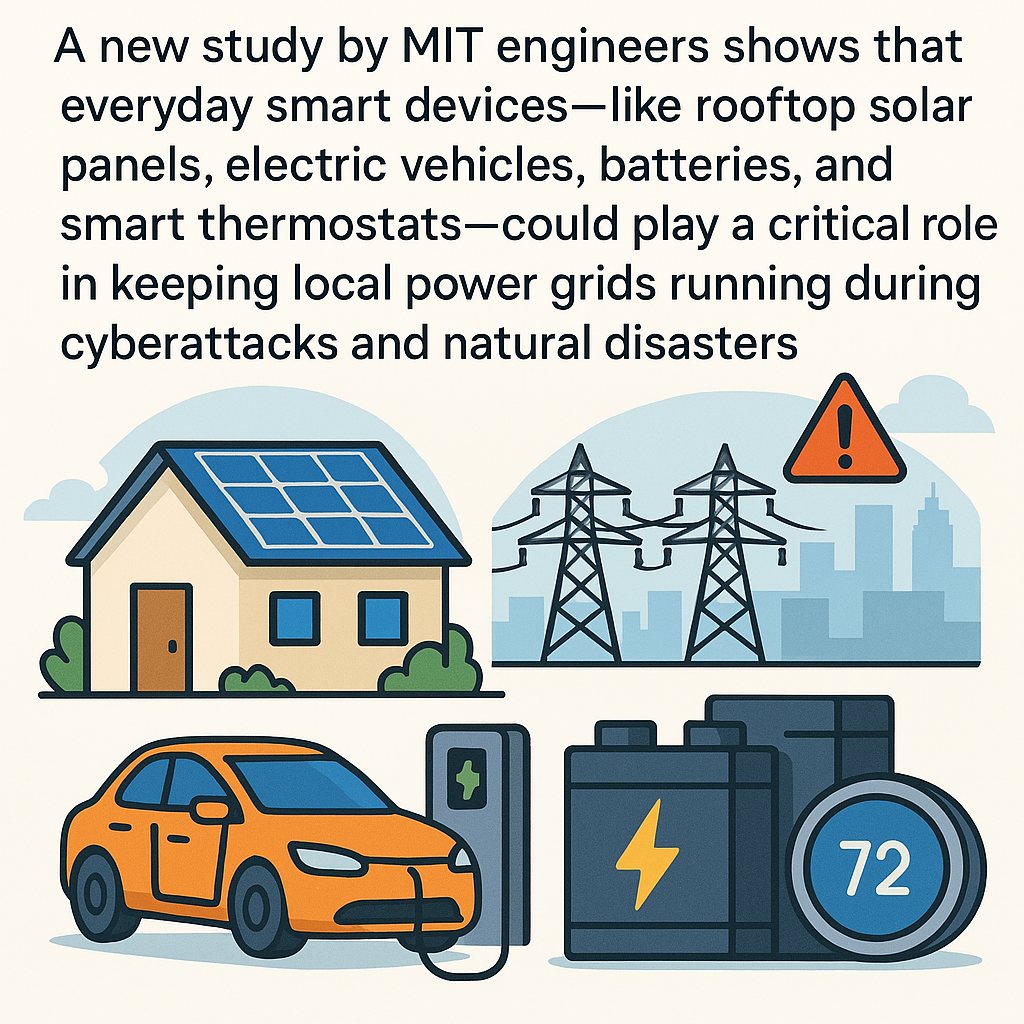A new study by MIT engineers shows that everyday smart devices—like rooftop solar panels, electric vehicles, batteries, and smart thermostats—could play a critical role in keeping local power grids running during cyberattacks and natural disasters.
The study, published in the Proceedings of the National Academy of Sciences, introduces a novel framework called EUREICA (Efficient, Ultra-REsilient, IoT-Coordinated Assets). It enables residential devices connected via the Internet of Things (IoT) to act as a decentralized safety net when central power systems fail.
“These small devices can each do a little, but together they can provide big resilience,” said co-author Dr. Anu Annaswamy of MIT’s Department of Mechanical Engineering.
Using an intelligent algorithm, the system identifies trustworthy grid-edge devices that can either inject power into the grid or reduce energy use—forming a local electricity market that responds dynamically to outages. Consumers participating in these networks could be compensated based on their contribution during emergencies.
Simulations tested across various outage scenarios, including cyberattacks and severe weather events, demonstrated that the algorithm successfully stabilized the grid every time.
The project, supported by the U.S. Department of Energy and MIT Energy Initiative, lays the groundwork for a future where communities can turn their homes and vehicles into on-call energy assets.
